#dance theater of harlem
Explore tagged Tumblr posts
Text

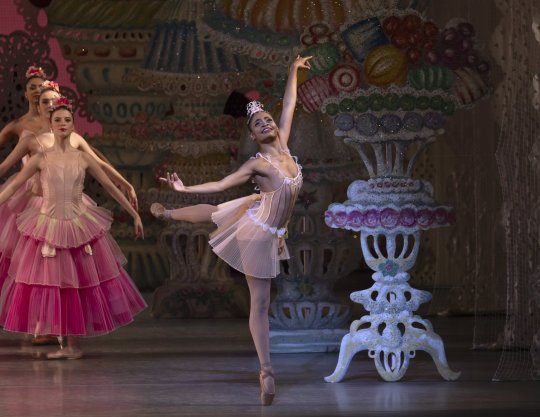
Alexandra Hutchinson performing as Dewdrop in The Nutcracker for New York City Ballet
Photos by Erin Baiano
209 notes
·
View notes
Text
youtube
Formwela 12 by Esperanza Spalding featuring Carmen de Lavallade
#music#esperanza spalding#matthew stevens#francisco mela#leo genovese#coreography#dance#carmen de lavallade#francesca harper#fernando lodeiro#oscar zambrano#daphne lee#amanda smith#akua noni parker#video#leo holder#t.l. benton#mike adeyeye#allen mays#lily consuelo saporta tagiuri#dance theater of harlem#Youtube
38 notes
·
View notes
Text
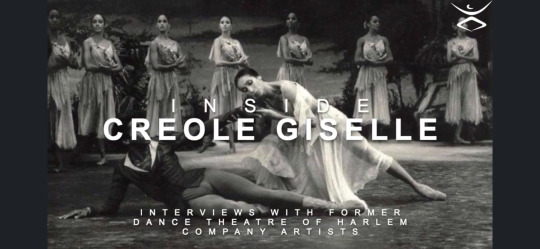
I found this 8 minute documentary that Dance Theatre of Harlem put together about the creation of Creole Giselle.
https://fb.watch/rIsmkx_R7w/?mibextid=w8EBqM
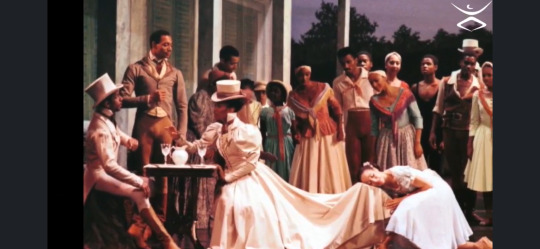



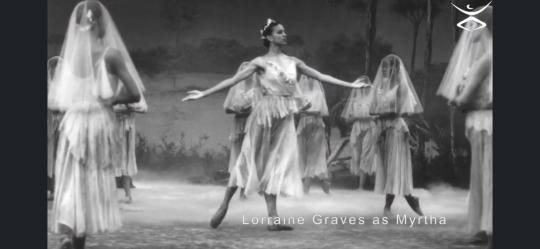
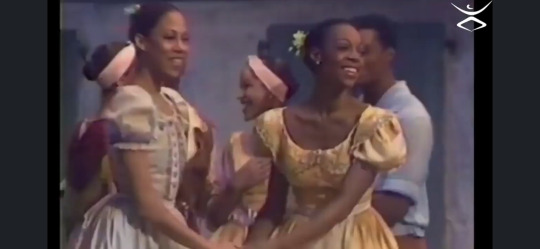



#found that clip of virginia johnson in my drafts and dove down a rabbit hole#dance theater of harlem#creole giselle#giselle#arthur mitchell#virginia johnson#theara ward#augustus van heerden#lorraine graves#eddie shellman#frederic franklin#ballet#dancers#dance#dance videos
14 notes
·
View notes
Text
#michaela deprince#michaela mabinty deprince#ballet#dutch national ballet#art#photography#fashion#film#balletcore#neoclassical ballet#american ballet theatre#nyc ballet#dance theatre of harlem#black women#black ballerina#black beauty#black excellence#dance theater of harlem#new york city ballet#ballerina#ballet aesthetic#the nutcracker#nutcracker#swan lake#gif#gifs#my gifs#black girl magic
2 notes
·
View notes
Photo
@ramdaughter

the fabulous arthur mitchell and dance theater of harlem
115K notes
·
View notes
Text

Mambo trio. 🎹🎻🥁🎺🪘(mixed media collage)🎵
#jazz#jazzmusic#jazz music#smooth jazz#jazz fusion#jazz trumpet#trumpet#clarinet#piano#mambo#mambo no. 5#salsamusic#salsa dancing#cuban#afro cuban#afro caribbean#jazz piano#jazz pianist#jazz pop#double bass#Harlem#harlem renaissance#spanish harlem#cotton club#apollo theater#contemporary art#collage art#saturday night jazz#acrylic painting#mambo italiano
10 notes
·
View notes
Photo
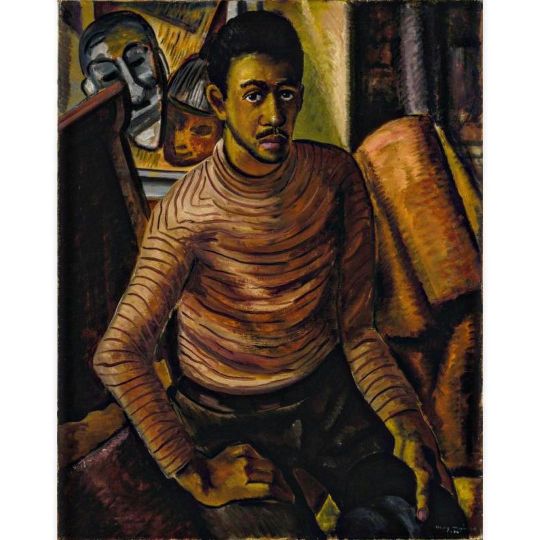
#SelfPortrait #MalvinGrayJohnson Malvin Gray Johnson was active during the heyday of the #HarlemRenaissance of the 1930s. The Harlem Renaissance was an intellectual and cultural revival of #AfricanAmerican #music, #dance, #art, #fashion, #literature, #theater, #politics, and scholarship centered in #Harlem (in #NewYorkCity). Johnson simplified the #forms of his #subjects and occasionally emphasized his African past by including #African #imagery in his paintings. The compressed space in his Self Portrait speaks to Johnson’s profound awareness of #modernist compositional devices. The easel at the left side of the canvas identifies him as an #artist, and the #masks in the background make an assertive statement about his African #heritage. In 1934, the year he painted his self-portrait, Johnson joined the ranks of the #PublicWorksOfArtProject, the first of President #FranklinRoosevelt’s #NewDeal art programs, which paid artists a monthly stipend. Although the job lasted only six months, Johnson was finally able to paint full time. Ironically, the year proved to be Johnson’s most prolific but also the last of his short #life. #DailyArt (at United States) https://www.instagram.com/p/Co5PF4wvK0W/?igshid=NGJjMDIxMWI=
#selfportrait#malvingrayjohnson#harlemrenaissance#africanamerican#music#dance#art#fashion#literature#theater#politics#harlem#newyorkcity#forms#subjects#african#imagery#modernist#artist#masks#heritage#publicworksofartproject#franklinroosevelt#newdeal#life#dailyart
0 notes
Text

Today we celebrate the life and accomplishments of the "Godfather of Voguing," Willi Ninja. Born in 1961 Queens, New York, Willi was raised by an encouraging and supportive mother, Esther Leake, who not only encouraged his passion for dance but --significantly-- supported his own self-identity. While not able to afford dance lessons, Leake nevertheless took her son to ballet shows and other performances at places like the Apollo Theater, and Willi embarked on a self-taught path to dance greatness.
Borrowing heavily from the Harlem ballroom scene (and its established role as a socially safe space for Black, Latino, and LGBTQ+ alike), Willi mastering the singular art of voguing, a unique form of dance that blended fashion poses with precise martial-arts movements. In 1982 Willi founded his own dance troupe, the House Of Ninja, which --in keeping with Harlem ballroom tradition-- also served as a community safety net. The "Ninja" moniker was inspired by Willi's own interest and study of various martial arts. Willi rapidly ascended to stardom, perfecting and reinventing his dance techniques. By the 1990's Willi had landed appearances in music videos (including two with Janet Jackson), films, talk shows, and international runway shows; drawing attention from pop icons like Madonna and fashion moguls like Jean-Paul Gaultier. One 1991 appearance on Joan Rivers' show caused considerable buzz as he encouraged audience members to "walk" as if participating at a drag ball.
On this very date (June 9) in 1990, Jennie Livingston's inspiring documentary Paris is Burning, which features appearances by Willi and the House of Ninja, was released at the NewFest New York LGBT Film Festival. The film exposed Willi and his signature choreography to a much wider audience. Shortly after the film's premiere, Willi starred in Anthem, a critically-acclaimed 9-minute video directed by Marlon Troy Riggs.
Willi never neglected his own community, though --his rising stardom offered him a megaphone to advocate for many issues important to the LGBTQ+ community, among them HIV/AIDS awareness and fighting to end the relentless social stigma that accompanied patients with the disease. Willi himself died of heart failure due AIDS complications, in 2006.
#blm#black lives matter#black history#pride month#lgbtq+#willi ninja#house of ninja#voguing#ballroom culture#teachtruth#dothework
109 notes
·
View notes
Text
Olga (Ollie) Burgoyne
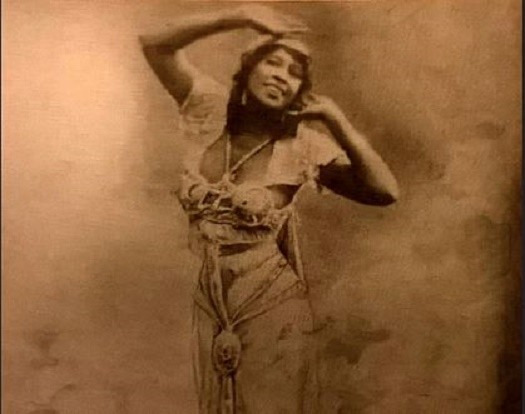
Olga “Ollie” Burgoyne, also known as Ollie Burgoyne-Calloway, was a singer and dancer specializing in Russian and other ethnic dances. She was also an actress and businesswoman who gained popularity during the Harlem Renaissance and left her mark as one of the most influential African American dancers and choreographers of that time.
Ollie Burgoyne was born in Chicago, Illinois, on June 13, 1879. She was part Russian and part Creole. Ollie’s cousin, Ida Forsain, toured Russia and specialized in Cossack dancing. Influenced by Forsain, Burgoyne debuted at age 17 in John Isham’s Oriental America nightclub in Chicago in 1896. In 1901, at age 22, she embarked on an eight-year tour of Europe (Germany, France, Denmark, Switzerland, Hungary, and Russia) with seven singing and dancing girls known as the Louisiana Amazon Guards.
In 1903, Burgoyne briefly returned to the United States and joined the cast of the operetta In Dahomey, which was the first African American musical to be performed on Broadway. After her performance, Burgoyne formed Duo Eclatant with partner Asher Watts. She also founded the Burgoyne Musical Company.
During her years in Russia (1904-1914), Burgoyne performed in many prestigious venues, including the Krestovskiy Garden Amusement Park (St. Petersburg) and the Aumont Theater (Moscow). She also made side trips to Odessa in what is now Ukraine, Athens, Greece, Istanbul, Turkey, and Cairo, Egypt. She opened the Maison Creole lingerie store in downtown St. Petersburg (Russia), where she employed a staff of 27. In August 1914, while Burgoyne was vacationing in Marienbad, Austria, World War I broke out, and she was unable to return to Russia and thus lost her businesses and properties there.
Between 1914 and 1929, Burgoyne continued to tour mainly in western Europe. Her specialties were Brazilian, Spanish, and Russian dances, which she mastered while traveling. She briefly returned to the United States during this period, where she performed in New York City, Chicago nightclubs, and Harlem’s Lafayette Theater. In 1925, Burgoyne produced two dance revues, Darktown Strutters, and Harlem Strutters, in New York. She also appeared in ten Broadway productions between 1926 and 1937.
In 1931, Ollie Burgoyne was named one of the eight major dancers and choreographers of the Harlem Renaissance, part of an elite group that also included Hemsley Winfield, Edna Guy, Randolph Sawyer, Asadata Dafora, Katherine Dunham, Charles Williams, and Pearl Primus. In April 1936, when Burgoyne was 57 years old, she appeared in the play Mississippi Rainbow, performed at the Lafayette Theater. In the later years of her life, Burgoyne taught dance and worked periodically in the film industry, starring in movies such as Laughing (1930) and The Timid Ghost (1937). With a career spanning nearly 50 years, Ollie Burgoyne died on April 2, 1974, in Oxnard, California, at the age of 95.
143 notes
·
View notes
Text

The 306 Workshop Group in front of 306 West 141st St., late 1930s.
The 306 Workshop Group, also known as the Harlem Art Workshop, was founded by artist Charles Alston. This group served to bring together Black artists such as Jacob Lawrence, Romare Bearden, Augusta Savage, and Langston Hughes, just to name a few. Located at 306 West 141st Street in Harlem, the Harlem Art Workshop provided these artists with both a meeting and work space. In the 1920s, Harlem became a coveted address. The neighborhood in New York City was synonymous with an outpouring of production in the visual arts, music, literature, theater, and dance that some began referring to the creative era as the Harlem Renaissance.
Famous artists of the Harlem Renaissance included: sociologist and historian W.E.B. Du Bois, writers Claude McKay, Langton Hughes, and Zora Neale Hurston, musician Duke Ellington, and entertainer Josephine Baker. These artists strove to express their racial identity and pride.
Jacob Lawrence, an artist of the Harlem Renaissance, believed his paintings were “a portrait of myself, a portrait of my community.” The community he grew up around included artist and mentor Charles Alston and leading philosopher Alain LeRoy Locke.
The people of Harlem and their rich heritage were constant sources of inspiration for Lawrence. The community experience—its triumphs and tragedies, its dreams and disappointments, its pleasures and humility, collectively forged by the Great Migration, the Harlem Renaissance, and the Depression era—lives on in his paintings.
Photo & text: Phillips Collection
#vintage New York#1930s#Harlem Renaissance#306 Workshop Group#Harlem Art Workshop#1920s#vintage Harlem#Charles Alston#Jacob Lawrence#Romare Bearden#Augusta Savage#Langston Hughes
137 notes
·
View notes
Text
JONATHAN GROFF SETS 2025 BROADWAY RETURN WITH ‘JUST IN TIME’
by Philip Boroff
EXCLUSIVE: Newly minted Tony Award winner Jonathan Groff will play the 1950s and ’60s crooner Bobby Darin in a staged reading next month, ahead of a planned Broadway opening in spring 2025, people familiar with the musical said.
The reading of Just in Time will be directed by Alex Timbers (Moulin Rouge!). On Broadway, Tom Kirdahy and Robert Ahrens are set to produce the show, which tells the story of the short but eventful life of the popular performer, whose hits included “Mack the Knife,” “Dream Lover” and “Just in Time.”
Born Walden Robert Cassotto in East Harlem, Darin had rheumatic fever as a child that damaged his heart. He lived, he acknowledged, as if on borrowed time before his death at 37.
He led a new generation of swinging singers into the rock revolution of the 1960s. He also acted in movies, composed music, married the actress Sandra Dee and as an adult discovered that the woman he thought was his older sister was his mother.
“I went on YouTube,” Groff told reporter Elysa Gardner before a rehearsal of an early version of the show, presented as part of the 92nd Street Y ‘s “Lyrics and Lyricist” series in 2018. “I watched all these TV performances, from the beginning to the end of his career, and I was blown away by his versatility. The rock & roll and the standards, the dancing, the folk songs. The duets with George Burns and Judy Garland. His life was insane.”
Darin spawned many imitators, including Kevin Spacey, who played him in the biofilm Beyond the Sea. The ballad “Just in Time” was composed by Jule Styne with lyrics by Adolph Green and Betty Comden for the musical Bells are Ringing. It became a hit for Dean Martin, among others, who was in the 1960 movie adaptation directed by Vincente Minnelli.
Besides Groff, casting wasn’t available. The reading isn’t affected by the monthlong Actors’ Equity strike intended to pressure the Broadway League to improve its Development Agreement with the union. Actors will be working under a contract negotiated with the League of Resident Theatres (LORT), an association of nonprofit theater companies.
Although the reading will be in New York, it’s under the aegis of Signature Theatre in Arlington, Virginia, which is a LORT member.
In a charmed career, the 39-year-old Groff has performed in the Frozen films, the TV series Glee and three acclaimed Broadway blockbusters — Spring Awakening, Hamilton and most recently Merrily We Roll Along — each of which earned him a Tony nomination. (He won for Merrily.)
Groff was also the first Seymour in the hit off-Broadway revival of Little Shop of Horrors, produced by Ahrens, Kirdahy and Hunter Arnold. Andrew Barth Feldman is currently playing the role.
In his moving acceptance speech at the Tony awards in June, Groff spoke about his love of the Broadway community and how “musical theater is still saving my soul.” Just in Time will aim for multigenerational appeal, as the young Broadway star sings 65-year-old standards.
Since the pandemic, older audiences have been slow to return to Broadway. If Just in Time is well received, Groff may be just the man to help bring them back.
**
Source: Philip Boroff in Broadway Journal.
Jonathan led a reading of the show on 15 March 2024 after rehearsing for a couple of weeks with the cast. Details below:

45 notes
·
View notes
Text

Alexandra Hutchinson of Dance Theater of Harlem and India Bradley of New York City Ballet, profiled by the New York Times.
Photo by Ye Fan
115 notes
·
View notes
Text

Today We Honor Noble Sissle and Eubie Blake
They was one of the nation’s premier composers and bandleaders, particularly in the early days of American popular song and theater.
As the Dixie Duo, Noble Sissle and Eubie Blake were the first African American act to perform without darkening their faces with burnt cork in the style of blackface minstrelsy.
During their extensive tours they met Flournoy Miller and Aubrey Lyles, a veteran comedy and dance duo who had gotten their start in theatrics at the historically black Fisk University in Nashville. The two acts joined forces, expanding Miller and Lyles’s sketch “The Mayor of Dixie” (later called “The Mayor of Jimtown”) and adding songs by Sissle and Blake to create the musical Shuffle Along, a pioneer musical featuring Josephine Baker, Florence Mills, Caterina Jarboro, William Grant Still, and Hal Johnson.
The production also helped propel the Harlem Renaissance of the early 20th century.
CARTER™️ Magazine
#noble sissle#Eubie Blake#carter magazine#historyandhiphop365#wherehistoryandhiphopmeet#history#carter#cartermagazine#today in history#staywoke#blackhistory#blackhistorymonth
80 notes
·
View notes
Text
youtube
Virginia Johnson as Giselle, dancing the mad scene in Dance Theatre of Harlem's Creole Giselle, filmed for television in 1987.
#she is so expressive!#the whole cast is#i don't usually feel so viscerally anxious for giselle in this scene but i was so worried about her here#the way she fails to do the steps#also it's funny how in filmed productions you can see all the little details#like how when her mother takes out her hair clips while she's fussing over her so her hair will be down for the next part#i need to find a video of the whole performance now#virginia johnson#eddie shellman#creole giselle#giselle#dance theater of harlem#ballet#dancers#Youtube
16 notes
·
View notes
Text
Great Gatsby
My Mom, Aunt and I saw the Great Gatsby last night. Great show. Amazing costumes and scenes as you would expect. We got $24 tickets we get through Bee's ice skating program. My husband and I will go see Water for Elephants next month. The Classical theater of Harlem is also having free nightly outdoor performance of a midsummers night dream - which looks like a fun adaption. Thinking of taking the girls next week. I think it has lots of glitzy costumes and dancing. It doesn't start until 8:30 but I think we can go for the first half. As a kid my mom had weekly tickets to the Muny - a huge outdoor theater. All of the kids went to the kids show once a summer. Fond memories.
The girls start science camp next week. They love Camp Half blood/sword camp so much. So much imagination. They are bummed its over but they did science camp and liked it last summer.
We are scheduled to go to Banff and Jasper National Parks the end of August. We always do our summer vacation then because camps end but school doesn't start. Turns out two other people at work also want that week off. They may tell me no. Which is fine. So far I've only booked cancelable lodging. We will figure out childcare and go the week before. We may end up switching destinations because we will no longer have the extra labor day Monday off. Its a pretty pricey flight so I don't want to go if we don't have enough time. Maybe Columbia? We will make it to Banff someday.
Talked with baby boy's new school OT and PT. They said he's doing great. He's so used to doing therapies that he has no problems going with new people. PT mentioned the inability to slow down is his problem. Not news to us. Let's hope they can help.
Was reading the NYT's article about the study that says children's moving anytime between the age of 10 and 16 has really detrimental long term effects. For obvious reasons loosing your close knit community during that age is difficult. Here in NYC because of school choice kids can go across town for Junior high and then to a totally different location with no one they know for High School. In addition to the (unhealthy, I think) stress of applications, etc I do wonder if it would have the same negative outcomes. Maybe that's just common practice everywhere now? Where I grew up Jr High was everyone you went to Elementary school with and then three other elementary schools. High school was everyone from your Jr High. I def went from Kindergarten through Graduation with many of the same people.
In my circles everyone believes social media is the cause of teenagers mental health problems - which I believe. But I also think kids having so much less freedom contributes. Its tricky in NYC - as I can't send my kids out to their neighbors backyard - but I try to give the girls freedom as much as possible. Baby boys only four but unless his personality changes I think it will be even more difficult to give him freedom.
Here's to hoping Biden drops out in the next few days. Let's all buy the man a drink, give him a big thank you and let him live out his days in peace. Job well done. Lots of room for improvement but overall A+ in my book.
20 notes
·
View notes
Text
I figured I should post the director's note from Cats: The Jellicle Ball. So here it is:
From the Co-Directors:
Welcome to the culminating production of PAC NYC's Inaugural Season!
With its glorious and beloved score, Cats is in its essence the story of a competitive ball, a ball in which the ultimate prize goes to the unlikeliest but most deserving competitor.
T. S. Eliot's language, often playful, is also full of shadows: the bittersweet longing for lost youth and beauty; the wisdom of elders passing the baton across generations; and the spiritual depth in knowing that, even though we are alone in our mortality, it is ultimately our communities that save us.
The idea for this production was born when we began to think about Andrew Lloyd Webber's iconic musical with T.S. Eliot's words through a queer lens.
The global phenomenon called Ballroom was created by Black and Brown communities here in New York City over 50 years ago, growing out of even older traditions of Harlem drag pageants. A safe haven for gay men and transgender women, the gender-fluid Ballroom community is often organized into "houses" in which "house mothers" and "house fathers" mentor their "children" to stylishly walk and dance on the runway (the "catwalk") in specific competitive categories. In the context of our production, "cat" is slang for any queer person or ally who is part of the Ballroom scene.
Both Cats and Ballroom celebrate transformation and self-acceptance, the power of choosing one's own name. And both this musical and the Ballroom scene remind us how essential it is that we respect the names—and the identities—that people choose for themselves. After all, all of us cats have nine lives...
There are so many generous and gifted Ballroom and musical theater artists who have given of their time and talent through multiple workshops to make this production a reality, including our extraordinary creative team and the musical theater titans and Ballroom icons who are part of today's performance. Our profound thanks to all of you. We also cannot overstate our gratitude to Andrew Lloyd Webber and his colleagues at The Really Useful Group for their bold leap of faith and their thoughtful collaboration throughout our production's journey.
On behalf of all of us who have worked on Cats: "The Jelicle Ball," we are so happy that you have come the ball!
-Zhailon Levingston and Bill Rauch
Photo:

22 notes
·
View notes